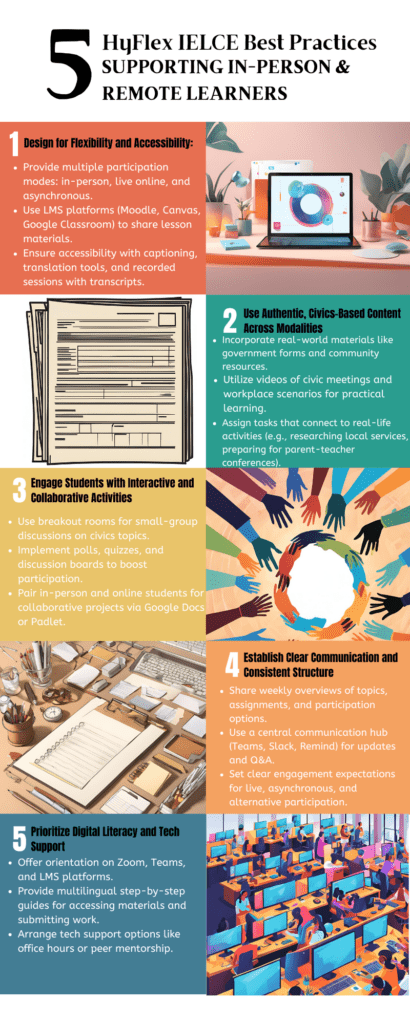Matthew Brown, Director of Career Pathways for English Language Learners
Creating a welcoming and trusting environment for all students is no small task, but when done thoughtfully, it fosters new opportunities and skill development for both administrators and instructors. Five years ago, at the onset of the COVID-19 pandemic, we were forced to rethink our approaches, adapt our methods, and develop new instructional strategies. Today, immigration enforcement concerns present another significant barrier for many ELL students, often deterring them from attending in-person classes and leaving them stressed and distracted as a fundamental level of Maslow’s Hierarchy of Needs is disrupted. While we may not have the power to change policies, we do have the ability to adjust our instruction to meet students where they feel safest. Whether in an online, in person, or a Hyflex IELCE learning environment—where students can participate in person, join online, or engage asynchronously— we must ensure the learning remains accessible without forcing students to choose between their education and their sense of security.
But effective online instruction isn’t just about turning on Zoom or Teams. It requires thoughtful design, balancing flexibility with structure so students can transition from in person to online without getting lost. Course materials should be available in multiple formats, with clear instructions, recorded lessons, and consistent communication. A well-structured class ensures that no matter how a student participates, they remain connected to the learning experience.
Context matters. IELCE instruction goes beyond teaching English—it’s about equipping students with the skills they need to navigate real-life situations and succeed in the workforce. Strong partnerships between community colleges, local employers, community organizations, and workforce boards are essential. When these groups collaborate, they can create a unified, clearly defined learning objective that ties language instruction directly to career pathways and civic engagement.
Rather than isolated ESL lessons, students gain practical skills they can immediately apply—whether it’s understanding workplace safety protocols, filling out a rental application, or having a conversation with their child’s teacher. Contextual instruction strengthens knowledge transfer by grounding learning in real-world applications, making education more relevant and increasing engagement and comprehension. As Malcolm Knowles (1980) put it, “Adults are motivated to learn to the extent that they perceive that it will help them perform tasks or deal with real-life situations.” By designing instruction that connects directly to students’ personal and professional lives, educators can foster greater motivation, leading to stronger retention, deeper engagement, and lasting success.
Engagement is key. Whether in the classroom or online, students should feel equally involved. Virtual breakout rooms, discussion boards, and collaborative tools like Google Docs allow remote and in-person learners to interact seamlessly. Trust is just as important. Students must know their privacy is protected and their participation—whether through video, audio, or chat—is valued.
Of course, technology presents challenges. Not all students have reliable internet or experience with digital tools. Digital literacy training, multilingual tech support, and flexible participation options help bridge that gap. The goal isn’t just to provide another way to attend class—it’s to create an inclusive learning space where every student, regardless of personal circumstances, can show up, engage deeply, and succeed.
When done right, a flexible IELCE learning model does more than make education possible—it empowers students to build skills, stay connected, and move forward, wherever they are.



